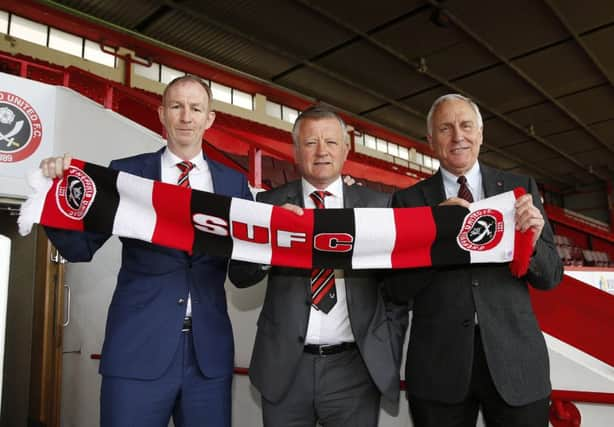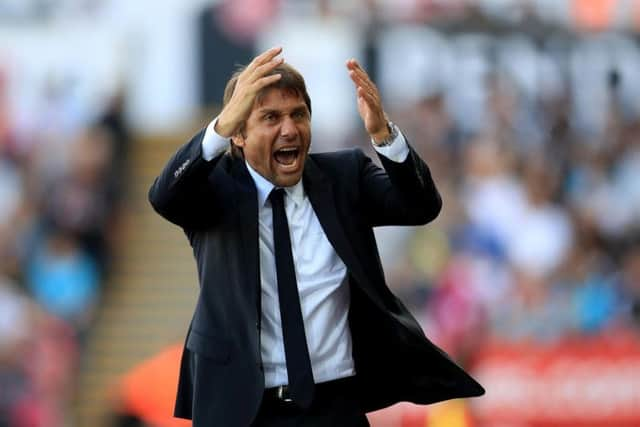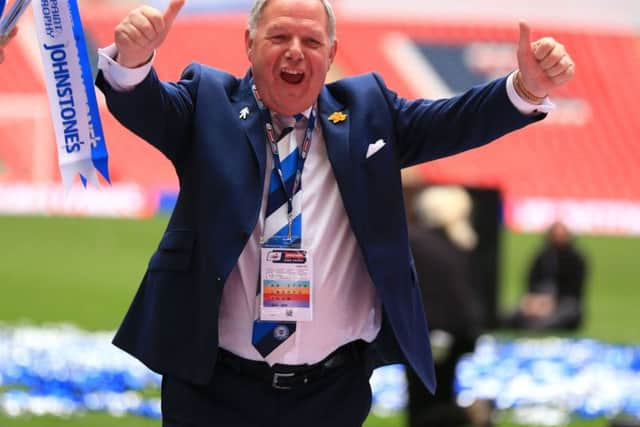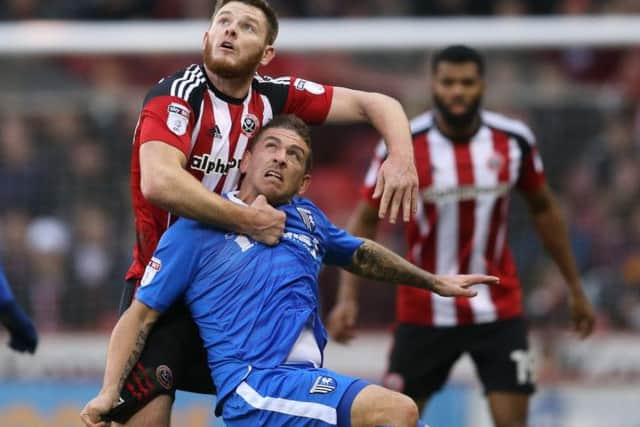Sheffield United: Former players explain why Chris Wilder's side are suited to playing with three centre-halves


Not that Sheffield United’s manager has anything but respect for the septuagenarian who, in his capacity as Peterborough’s director of football, will watch tomorrow’s match between the two clubs at London Road.
Surely though, Wilder joked, Jurgen Klopp would have been a more suitable comparison? Or better still, Chelsea’s supremely dapper Antonio Conte.


Advertisement
Hide AdAdvertisement
Hide AdActually, despite operating in different stratospheres, Wilder and the Italian do share more in common than a propensity to get wound-up during games. Both sit on top of their respective divisions. Both have breathed new life into under-performing squads. But perhaps the most obvious link between them is their preference for a 3-5-2 system and, scrolling back six months or so, the circumstances which prompted them to implement it.
Wilder privately outlined plans to play with three centres-halves and two wing-backs within days of taking charge in May. Like Conte, however, he initially decided against going down this route and resolved to organise his team in a traditional 4-4-2 shape instead. The tipping point came following a 2-1 defeat at Millwall which, after a desparetely slow start to the season, left United propping-up the rest of the League One after four games. Less than 40 days later, and six miles across London, Conte also decided to trust his own instincts after being thrashed by Arsenal. The rest, at Bramall Lane and also Stamford Bridge, is history.
“Ultimately, what decides how you play is the people you’ve got at your disposal,” Robert Page, the former United defender, said. “But, if you’ve got one strong centre-half and two who are more athletic, then it’s a really good system. So long as the two lads either side, as it were, are really athletic and confident going one on one like a full-back would. If they’re not then it’s not going to work, you really are going to get found out because people can exploit that.”
With Jake Wright restored to the heart of United’s rearguard, alongside either Chris Basham, Jack O’Connell or Ethan Ebanks-Landell, Wilder’s tactical shift has reinvigorated the South Yorkshire club’s campaign. They travel to Cambridgeshire two points ahead of second-placed Scunthorpe and having kept their 11th clean sheet of the season against AFC Wimbledon last week.


Advertisement
Hide AdAdvertisement
Hide Ad“The 3-5-2 is nice and flexible because it can easily because a five at the back if the situation demands it,” Page, now first team coach at Nottingham Forest, continued. “So there’s that security there. As a three, it might feel like there’s a little bit less cover around you, which is why the communication, as always, has got to be so strong. But, like I say, the two wing-backs can drop and make it a five if you want. Or you can go to a four if someone steps out.”
Although Carlos Bilardo is regarded as the architect of 3-5-2, having experimented with it during a tour of Europe in 1984, the Argentine’s notion that full-backs should be viewed as attacking instruments was hardly revolutionary.
Len Badger, who made over 450 appearances for United, remembers being asked to perform the same role by John Harris in the early Seventies.
“We played it slightly differently because we still had some defensive responsibilities,” Badger said. “That’s no so much the case with wing-backs now. It takes a lot of that away. We called it ‘being on the overlap.’


Advertisement
Hide AdAdvertisement
Hide Ad“I was fortunate because I had TC (Tony Currie) and Woody (Alan Woodward) in front of me and there was a sort of telepathy between us. They used the clear the space and I’d push forward into it, they knew when and where I’d be looking to do it. There were a few teams playing like that at the time but, and I don’t mind saying this, I think we did it better than most.”
Badger, still a regular visitor to United matches, thinks Wilder’s decision to adopt the 3-5-2 system was a masterstroke because it accentuates the strengths of Kieron Freeman and Daniel Lafferty.
“I think that system suits the players we’ve got,” he added. “Take Kieron Freeman for instance. It’s made him a better player, it’s actually improved him. It lets you contribute much more in forward areas and also, as he’s shown this season, in terms of goals too. But it’s tough, bloody tough in fact, to play that position physically. The fitness levels of the lads now is exceptional, you can see that just by watching them.”
With Ebanks-Landell receiving treatment for a hip injury, Basham, who operated as a wing-back towards the end of last term, could start the meeting with Peterborough where Grant McCann, Wilder’s opposite number, could pair Craig Mackail-Smith and Junior Morias in attack.


Advertisement
Hide AdAdvertisement
Hide AdAlthough 3-5-2 fell out of favour when many teams started playing with a lone centre-forward, its enjoyed a renaissance during the recent European Championships when the likes of Wales and Italy, then coached by Conte, employed it to good effect.
“If you look at all the teams who are successful, they play with two up top,” Page said. “But, playing with a three at the back can make it easier for you to do that. Get that second striker on the pitch without sacrificing anything further back. With two centre-halves, if the opposition are playing with two at the top, then one can’t mark and the let the other drop back to pick up the bits and cover. But the three deals with that well. Ultimately, it comes down to the players you’ve got and what suits them.”